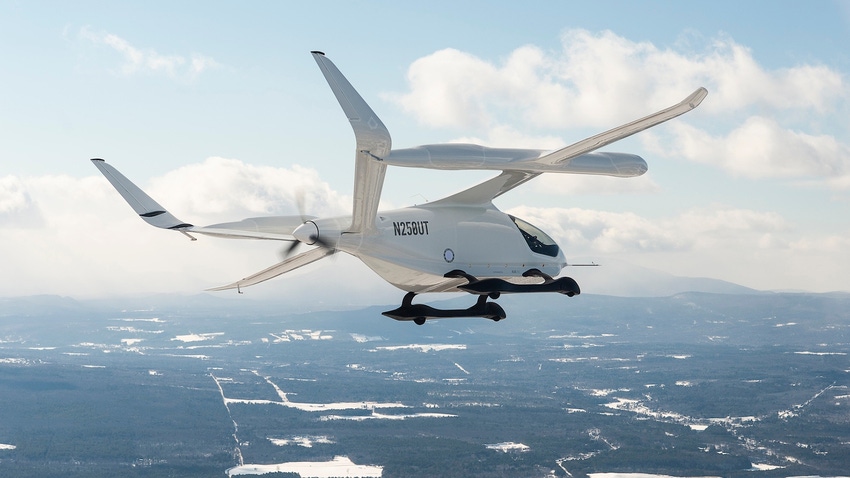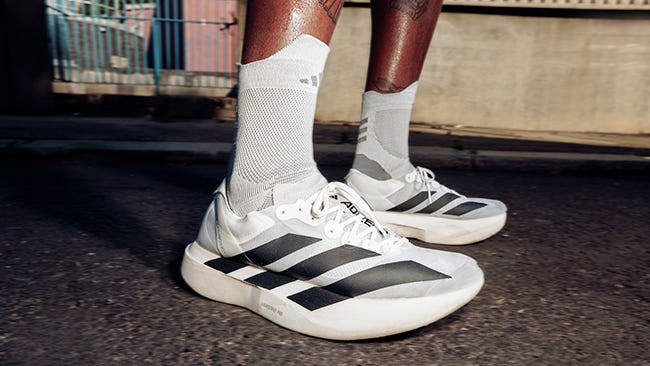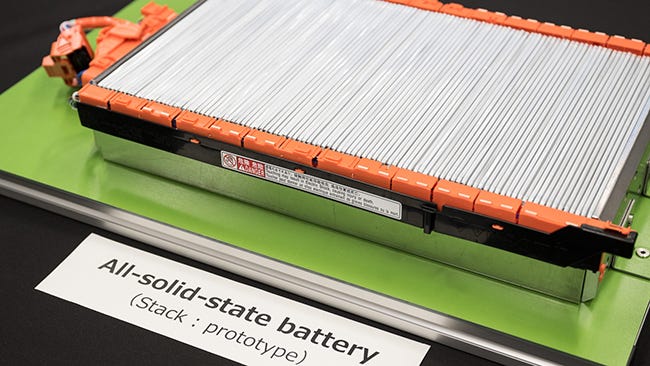5 Automotive and Mobility Trends to Watch in 2024
Expect to see breakthroughs in the air — flying electric taxis — and on terra firma — all-solid-state EV batteries and highly engineered running shoes that put the under-two-hour marathon within reach.
December 15, 2023

Flying electric taxis get charged up
While true commercial air taxi services may only take flight between the likes of Manhattan and JFK from 2025, activity in the electric vertical take-off and landing (eVTOL) mobility sector looks certain to gain momentum next year. Adoption of a common global combined charging standard (CCS), the most widely used standard for ground-based electric vehicles (EVs), will further boost roll out potential. Two eVTOL aircraft leaders, Beta Technologies and Archer Aviation, have established a partnership to work toward this.
Beta has already established an eVTOL plane charging network with its Beta Charge Cube systems on the East Coast and Gulf Coast, and its tie-up with Archer will soon see the same charging system installed on the West Coast for charging Beta's Midnight aircraft (pictured above) at its flight test facility in Salinas, CA. Eventually, a nationwide network approaching 60 sites will be in place to charge enough juice for short-range hops in less than 15 minutes.
A sub-two-hour marathon beckons
Back on the ground, perhaps one of the simplest forms of mobility — running — is nearing a significant milestone. It’s an odds-on bet that an African athlete, most likely a Kenyan, will break the magical two-hour barrier in 2024 thanks in no small part to advances in sports shoe technology. Just which brand owner — Nike? Adidas? Someone else? — will stake the claim to fame remains to be seen, but what’s certain is that a lot of bounce will be supported by the midsole foam and carbon-fiber plates somewhere underfoot.
Nike’s Vaporfly shoe has dominated the elite marathon scene for some time, with its Pebax polyether/polyamide block copolymer-based midsole foam. Previously, thermoplastic polyurethane (TPU) was the high-performance material of choice.

Will the Adidas Adizero Adios Pro Evo 1 help a runner break the marathon record? Image courtesy of Adidas.
Now there’s a new kid on the block in the form of the Adidas Adizero Adios Pro Evo 1, weighing in at 138 g — 33% lighter than the Vaporfly — and with 39 mm of unspecified cutting-edge foam under the heel. Will this be the performance step to break two hours? Better be quick, as Adidas only made 521 pairs in the first production run. They cost $500 a pair and are reportedly good for but a single marathon plus a bit of pre-marathon training.
Aluminum giga casting goes with the flow
While visiting the T-Plas plastics show in Thailand earlier in the year, PlasticsToday stumbled across a co-located die-casting show and the booth of Italian firm IDRA, the developer of the Giga Press aluminum die-casting press. IDRA delivered one such 9000-tonne press to the Tesla assembly plant in Fremont, CA, in 2020. It is capable of die-casting half of the rear frame components of the Tesla Model 3 in a single shot. A second, even larger IDRA press was delivered to the Tesla plant in Austin, TX, and this one can cast the entire rear-end frame assembly for the Tesla Model Y.
Toyota, Volvo, Ford, Hyundai, and Volkswagen are among OEMs planning or exploring the use of giga casting, as it massively reduces the number of welds, bolts and nuts, and screws required for assembly. A 160-kg single shot can potentially replace hundreds of parts, according to IDRA's Paolo Romani. Case-in-point: In the Tesla Model Y, 171 parts were integrated into just two front- and rear-end components, eliminating 1600-plus welds.
So what’s in it for plastics? One of PlasticsToday’s views is that damage limitation in accidents will be critical. These monolithic castings will not be easy to repair if damaged and may indeed need to be swapped out at great expense or the car written off. The more impact-absorbing plastic components can eliminate or reduce damage.
IRA electrifies investment in US EV production
Joe Biden’s signature Inflation Reduction Act (IRA) spells out attractive subsidies for companies investing in EV and EV component manufacture in the United States, among other green technologies. While offshore OEMs, particularly from Korea, feel hard done by, the IRA in effect necessitates local production of EV batteries to qualify for benefits.
The auto industry is already seeing a steady stream of investment announcements for battery production, as well as the materials that go into them. Solvay, for example, has confirmed plans to build a new battery-grade PVDF facility in Augusta, GA, while Asahi Kasei subsidiary Celgard has announced major expansion plans for Hipore ultra-high-molecular-weight polyethylene battery separator film in Charlotte, NC. Expect more announcements to follow in 2024.
Solid-state battery prospects solidify?
While EVs powered by all-solid-state batteries (ASSB) aren’t expected to hit the market until 2027 or later, recent announcements by heavyweights Toyota and Nissan point to heightened progress in R&D in 2024.

The partnership between Toyota and Idemitsu Kosan may he a sign that all-solid-state batteries for EVs are approaching commercial viability. Image courtesy of Toyota.
An announcement in October 2023 that Toyota had teamed up with materials supplier Idemitsu Kosan “to work together in developing mass production technology of solid electrolytes . . . for battery electric vehicles [in 2027-28]” is a sign that the technology is approaching commercial viability. That is, unless you side with the skeptics who question whether basic scientific concerns such as cell expansion have really been addressed, and whether high-volume manufacturing can ever be achieved. For now — watch this space.
About the Author(s)
You May Also Like



